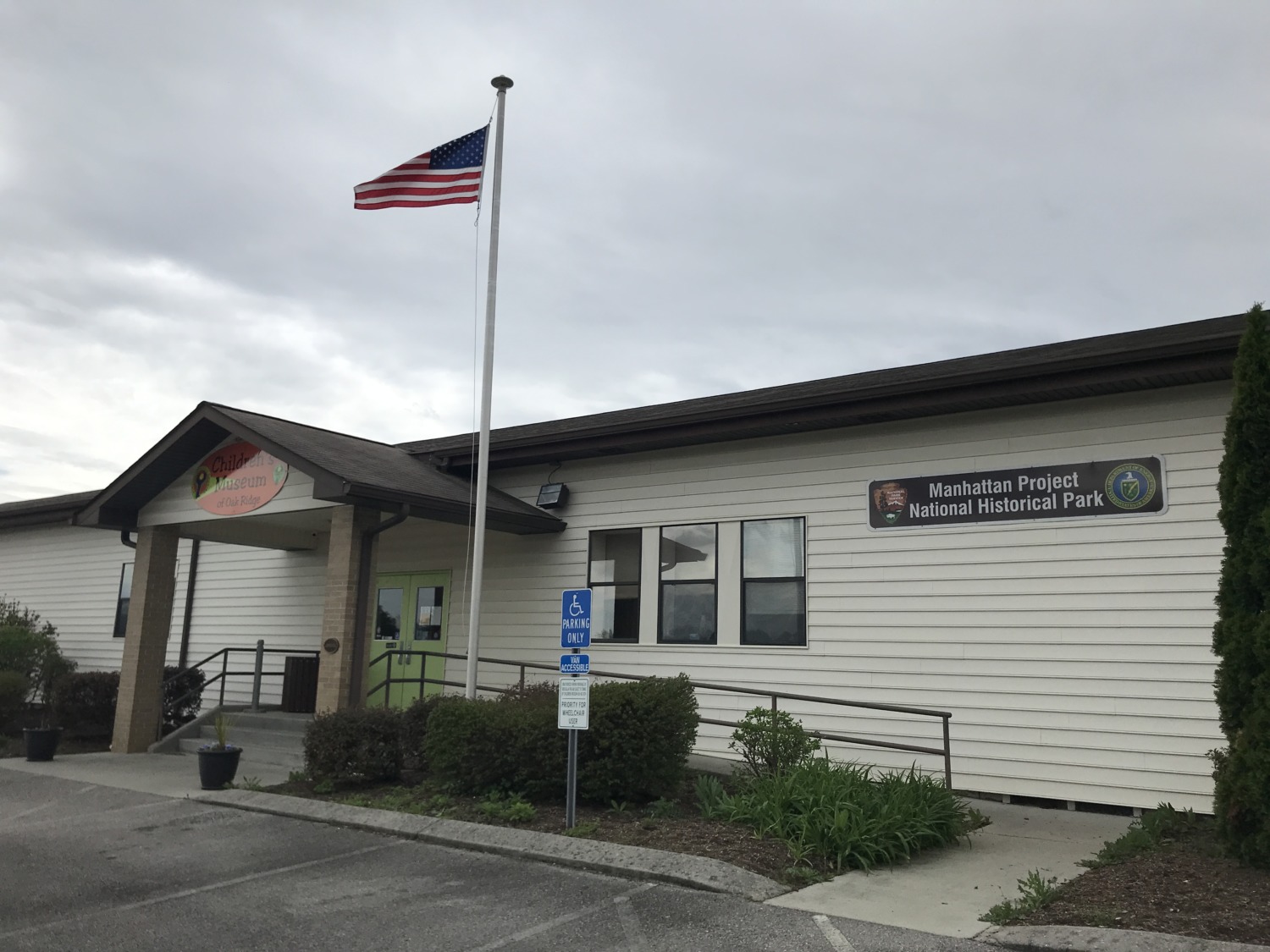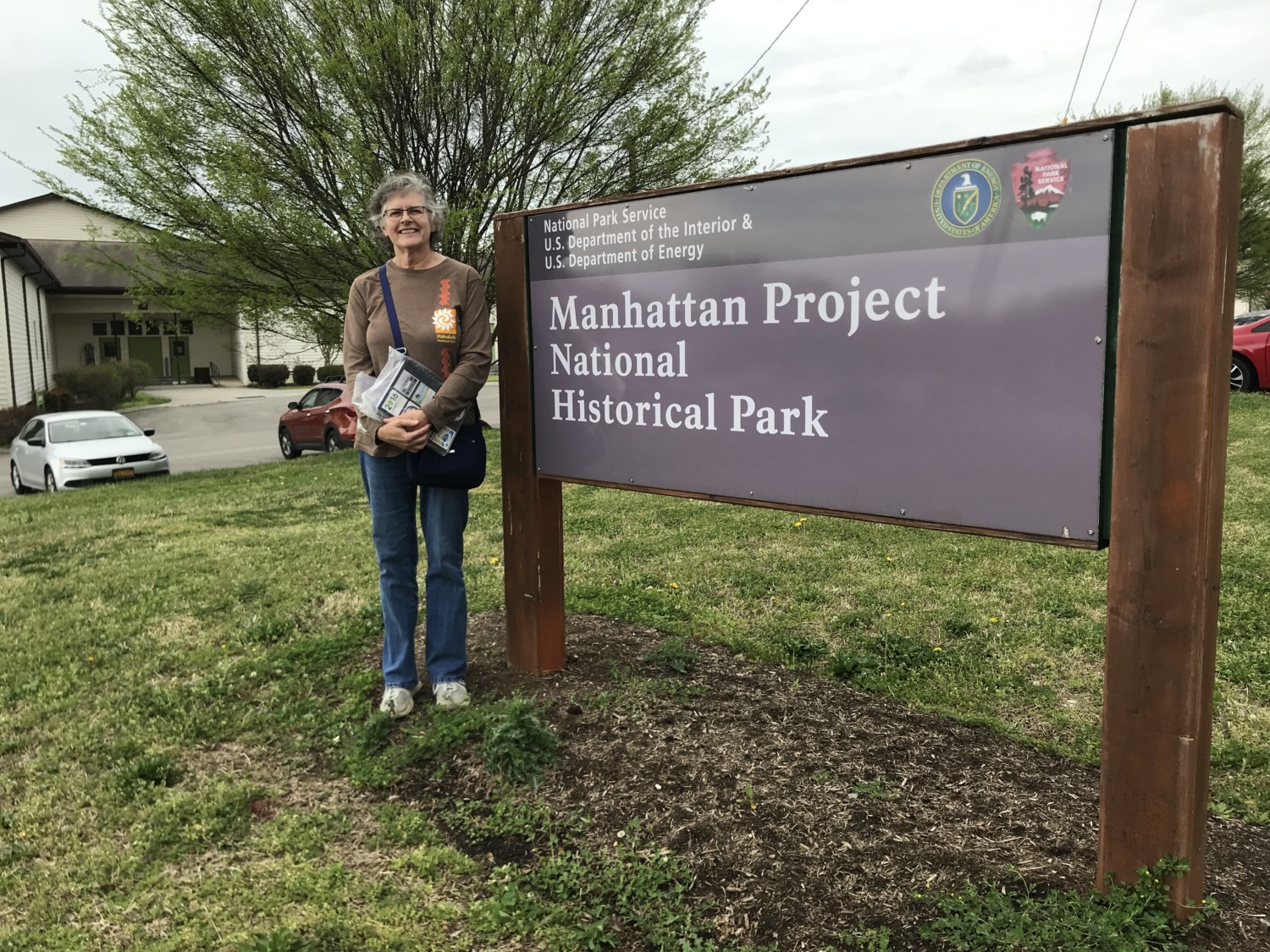Tom and I have been waiting two years to visit Oak Ridge, Tennessee. We have visited the other two parts of the Manhattan Project National Historic Park – in Hanford, Washington and Los Alamos, New Mexico – and only needed Oak Ridge to finish the park. But we were waiting for the Department of Energy to resume tours of the Y-12 area. We were sure they would resume this spring. No one seems to know, however, when they will resume, so Tom and I finally decided to visit and see what we could.
As you know, getting the National Park stamps is very important to me. The Manhattan Project National Historical Park has a stamp for each park that I can put in my book. But it also has a three part stamp that you have to visit each park to complete. I got the Hanford, Washington part of the stamp in 2017 and the Los Alamos, New Mexico part in 2018. Four years later, I was finally able to complete the stamp with the Oak Ridge, Tennessee part. The ranger at Oak Ridge said I was the first person he had seen with the completed stamp!
The Manhattan Project National Historical Park is a different kind of park site. It tells the story of developing the world’s first atomic weapon. The scale of this project and the secrecy involved is impressive. I can’t imagine it happening today. Although the three parts of the park have one superintendent, the staff of each park work independently in their region. The park is also a partnership with the Department of Energy, which is still conducting top secret research at Los Alamos and Oak Ridge. So the National Park Service interprets the story and the Department of Energy gives tours and maintains the buildings.

We started our visit to Oak Ridge by heading to the Visitors Center. The NPS Oak Ridge Visitors Center is a desk inside the lobby of the Children’s Museum of Oak Ridge. The Children’s Museum has a number of displays about Oak Ridge’s role in the Manhattan Project, geared, of course, to children. The ranger at the desk gave us a map with the 13 sites around town related to the history of the Manhattan Project.
In many ways, the entire city of Oak Ridge is part of the history of the Manhattan Project. Before the Manhattan Project, Oak Ridge didn’t exist. The city was developed and built entirely to support the personnel who worked on the project. The entire infrastructure of the city sprang up almost overnight. By 1945, 75,000 people lived in the city and worked at the Clinton Engineer Works which produced the enriched uranium needed for the atomic weapons.
There were three different methods used to produce the enriched uranium, each needing its own plant and its own corps of workers. Because of the dangers of radioactivity involved in the production, the plants were located in three valleys separated by mountain ridges. We were able to visit the K-25 History Center which gave an overview of the Manhattan Project as well as a more in-depth explanation of the gaseous diffusion method of enriching uranium. We found the museum very interesting.

We also saw the historic homes built for the white workers at Oak Ridge. The hutments that housed the black workers were torn down as soon as the war was over. Oak Ridge was developed by the federal government as a segregated community, required by the Southern bloc of Democrats in Congress to authorize funding for the project. Although Oak Ridge afforded employment opportunities for African-Americans, Tennessee had a lot of Jim Crow laws that limited where they could go and what they could do outside work.
Today Oak Ridge is a modern city with 31,000 residents. The Department of Energy is still the biggest employer in town. Radioactive waste management is also a big business in town as the city tries to deal with the environmental impact of years of radioactive waste production.
Tom and I enjoyed our visit to Oak Ridge very much and were especially impressed with the K-25 History Center. The city is proud of its heritage and is working to preserve and promote it. I am proud of completing my Manhattan Project stamp!


